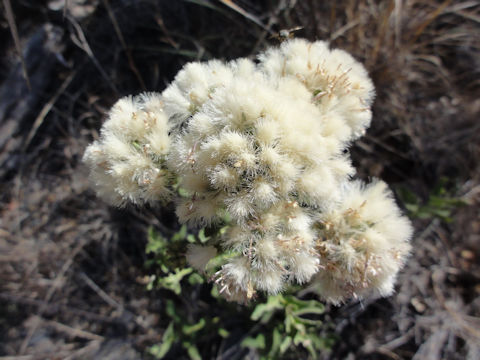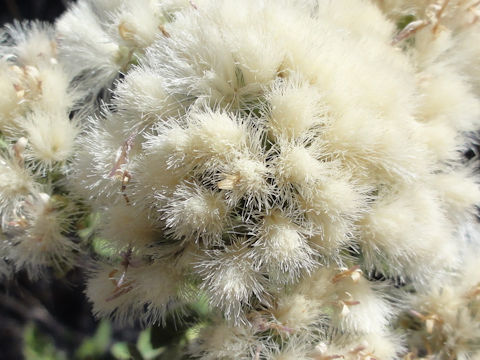
|
The Mule-fat (Baccharis salicifolia) belongs to Asteraceae (the Aster family). It is a semi-deciduous shrub that is distributed from the southwestern United States to northern Mexico and South America. It usually grows in wetlands, riverbeds, and near moist valleys, and is 90 to 360 cm tall. It can survive even with low rainfall, so it also grows in dry areas. The stems spread upwards, are green to brown in color, and branch sparsely. The leaves are long and narrow, similar to willow leaves, with serrated edges and three prominent veins. It produces many small, pink or reddish-white, woolly flower heads almost all year round. The English name "mule-fat" comes from the fact that prospectors and cowboys used to tie mules to shrubs and let them graze during the gold mining era.
|

